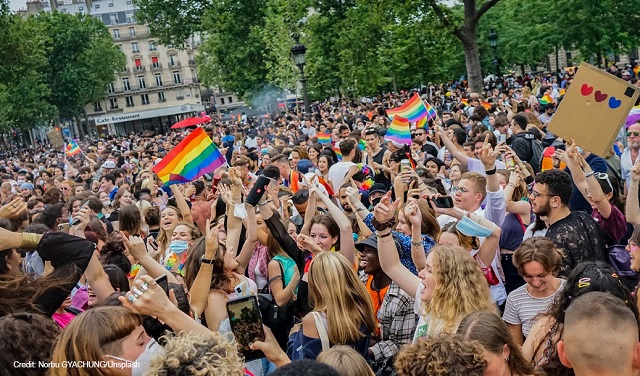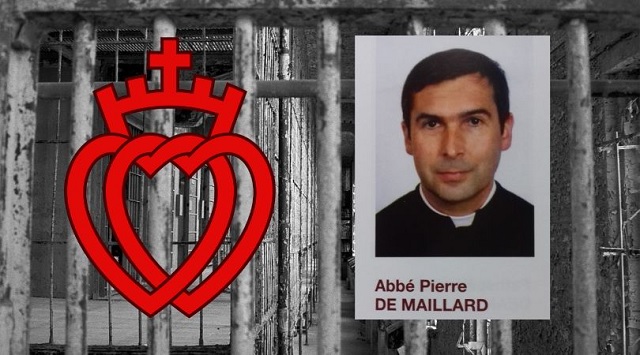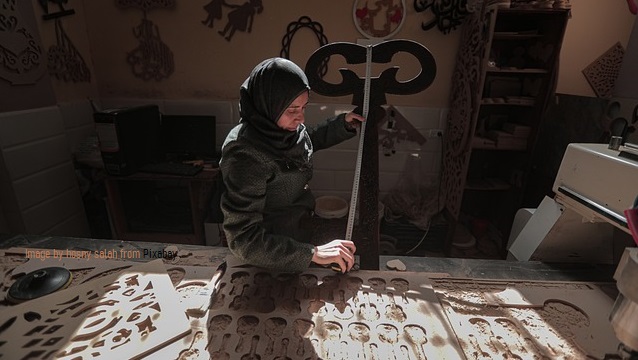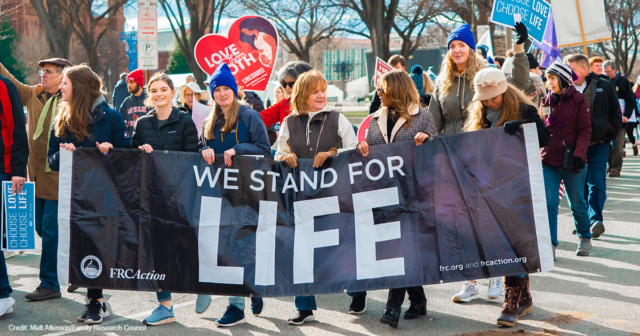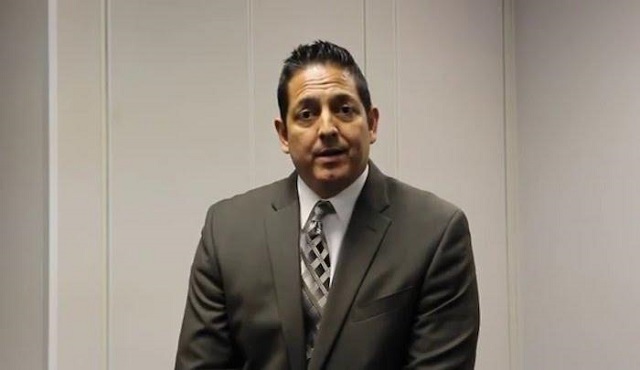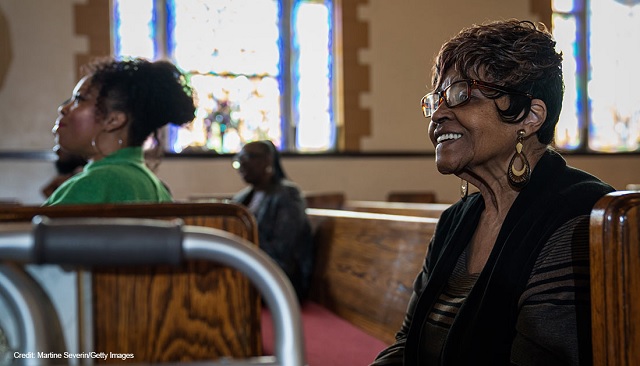By Dr. Rich Swier
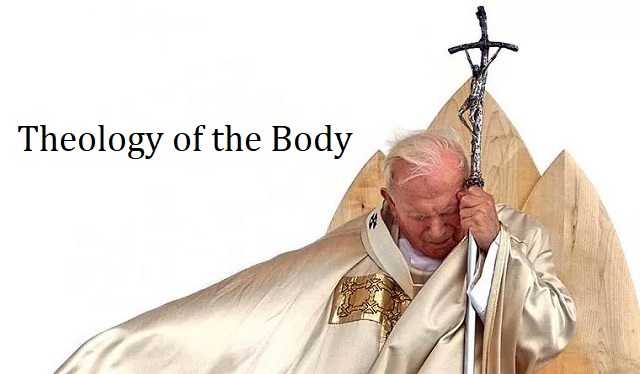
“God created man in his own image; in the image of God he created him; male and female he created them.” — Genesis 1:27
Pope John Paul II, born Karol Józef Wojtya, was the head of the Catholic Church and sovereign of the Vatican City State from 1978 until his death in 2005. He was the first non-Italian pope since Adrian VI in the 16th century and the third longest-serving pope after Pius IX and St. Peter.
He was beatified as Pope Saint John Paul II on May 1st, 2011.
The following is his “Theology of the Body” based upon a series of 129 lectures he gave from 1980 to 1984.
It covers what it means to be a male and female created by God, the Father. It covers our individual responsibilities and duties as fathers, mothers, and followers of Christ Jesus. It is a guide to living a good and holy life.
NOTE: Each chapter is provided with a synopsis of its message. To read the full chapter please click on the title.
1. Of the Unity and Indissolubility of Marriage
On 5 September 1979, in the first of his General Audiences on the Theology of the Body, the Holy Father expounded the words of Christ, “In the beginning the Creator made them male and female.”
2. Biblical Account of Creation Analysed
In his General Audience of 12 September 1979, the Holy Father compared two accounts of man’s creation from Genesis, establishing basic principles for his study of the Theology of the Body.
3. The Second Account of Creation: The Subjective Definition of Man
In his General Audience of 19 September 1979, the Holy Father examined the account of man’s creation in the second chapter of Genesis, observing its profundity in revealing the subjective side of creation in the image of God.
4. Boundary Between Original Innocence and Redemption
In his General Audience on 26 September 1979, the Holy Father considered a continuity between man’s state of original innocence and the state of original sin, which left him open to the grace of redemption.
5. Meaning of Man’s Original Solitude
In his General Audience on 10 October 1979, the Holy Father examined man’s solitude, not as male, distinct from female, but in his nature as distinct from other living things, his difference in superiority, revealed to him in his self-consciousness.
6. Man’s Awareness of Being a Person
In his General Audience on 24 October 1979, the Holy Father linked “man’s original solitude,” as different from and superior to other living creatures, with consciousness of his body.
7. In the Very Definition of Man, the Alternative Between Death and Immortality
In his General Audience on 31 October 1979, the Holy Father addressed again the solitude in which man was created, in relation to other creatures, but also with regard to his freedom of moral choice. The alternatives of death and immortality lay with him.
8. Original Unity of Man and Woman
In his General Audience of 7 November 1979, the Holy Father continued to lay groundwork for his Theology of the Body, meditating on Adam’s “sleep” from which the division of the sexes emerged.
9. Man Becomes the Image of God by Communion of Persons
In his General Audience of 14 November 1979, the Holy Father located the image of God, in which man was created, not only in the solitude of his humanity, but also in the communion of persons, in the creation of the first man and woman in relation to each other.
10. Marriage One and Indissoluble in First Chapters of Genesis
In his General Audience of 21 November 1979, the Holy Father spoke on the communion of the first man and woman, how it renewed their original unity before separation in creation, and revealed the meaning of their bodies by their complementarity.
11. Meaning of Original Human Experiences
In his General Audience of 12 December 1979, the Holy Father observed that, in the Genesis account, the shame at their nakedness, experienced by the first man and woman after the Fall, contrasts with their original innocence, which invites further study of their original consciousness of their bodies.
12. Fullness of Interpersonal Communication
In his General Audience of 19 December 1979, the Holy Father continued his series on the Theology of the Body, analyzing the absence of shame in our first parents, despite their nakedness, and its bearing on their communication.
13. Creation as a Fundamental and Original Gift
In his General Audience of 2 January 1980, the Holy Father continued his study of the Theology of the Body, analyzing the consciousness of our first parents, in how they perceived each other, without shame in their nakedness, as good, and a mutual gift, part of the good gift of God’s creation.
14. Revelation and Discovery of the Nuptial Meaning of the Body
In his General Audience of 9 January 1980, the Holy Father explained the “nuptial meaning” of the body as first experienced by Adam and Eve. Man, both male and female, realizes his essence only in living with and for someone else. The possibility of this mutual self-gift is manifested in the bodies of male and female, which gives them their nuptial meaning.
15. The Man-Person Becomes a Gift in the Freedom of Love
In his General Audience of 16 January 1980, the Holy Father continued his series on the Theology of the Body, by examining the “nuptial meaning of the body.” Through self-mastery, by which the purely physical side of sex was restrained, the first man and woman were free to give themselves totally to each other, and thereby discovered their true selves.
16. Mystery of Man’s Original Innocence
In his General Audience of 30 January 1980, the Holy Father pursued his examination of the Theology of the Body by dwelling on the mystery of man’s original innocence, that purity of heart which enabled Adam and Eve to give themselves to each other in love, as the effect of grace.
17. Man and Woman: A Mutual Gift for Each Other
In his General Audience of 6 February 1980, the Holy Father reexamined the nuptial meaning of the body, in the mutual gift of self by our first parents, in the context of their original innocence.
18. Original Innocence and Man’s Historical State
In his General Audience of 13 February 1980, the Holy Father reexamined our first parents’ original innocence, as their nature was originally graced, how it affected their relationship to each other and the nuptial meaning of their bodies as male and female.
19. Man Enters the World as a Subject of Truth and Love
In his General Audience of 20 February 1980, the Holy Father continued his series on the Theology of the Body. Created in the image of God, man (Adam and Eve) entered the world as a primordial sacrament, a sign to the visible world of the invisible mystery hidden in God, the mystery of truth and love, the mystery of divine life, in which man really participates.
20. Analysis of Knowledge and of Procreation
In his General Audience of 5 March 1980, the Holy Father continued his series on the Theology of the Body, by examining the meaning of the biblical statement that “Adam knew Eve his wife” (Gn 4:1-2).
21. Mystery of Woman Revealed in Motherhood
In his General Audience of 12 March 1980, the Holy Father further examined the concept of mutual “knowledge” between the first man and woman. The woman is brought to full awareness of the mystery of creation, in its renewal in human generation.
22. Knowledge-Generation Cycle and Perspective of Death
In his General Audience of 26 March 1980, the Holy Father continued his catechesis on Theology of the Body. He further examined biblical “knowledge,” as the nuptial relationship before the fall, a mutual, disinterested gift of self between spouses, contrasting it with the same relationship as a remedy for death after the fall.
23. Marriage in the Integral Vision of Man
In his General Audience of 2 April 1980, the Holy Father continued his series on Theology of the Body. Only by going back to the “beginning,” as Christ did in answering the Pharisees on divorce, can we get a total vision of man, male and female, and only so can we adequately understand marriage and procreation.
24. Christ Appeals to Man’s Heart
In his General Audience of 16 April 1980, the Holy Father continued his catechesis on Theology of the Body by turning to Christ’s teaching, in the Sermon on the Mount, on adultery in the heart.
25. Ethical and Anthropological Content of the Commandment: You Shall Not Commit Adultery
At his General Audience of 23 April 1980, the Holy Father continued his series on Theology of the Body. He examined the meaning of adultery, which is a breach in the unity of husband and wife, even if only by an interior act (“adultery in the heart”). He cited the case of David and Bathsheba.
26. Lust is the Fruit of the Breach of the Covenant With God
In his General Audience of 30 April 1980, the Holy Father continued his catechesis on Theology of the Body. He examined the three-fold lust, of the flesh, of the eyes, and the pride of life, by which man broke God’s original covenant.
27. Real Significance of Original Nakedness
In his General Audience of 14 May 1980, the Holy Father continued his series on Theology of the Body, explaining the nakedness of man after the fall as not merely physical. “…this man was deprived of the supernatural and preternatural gifts which were part of his endowment before sin. Furthermore, he suffered a loss in what belongs to his nature itself, to humanity in the original fullness of the image of God.”
28. A Fundamental Disquiet in All Human Existence
In his General Audience of 2 June 1980, the Holy Father continued his catechesis on Theology of the Body. The shame experienced by man after his fall expressed a deeper shame, called “cosmic,” reflecting a new disorder in his nature, by which not only was the relationship between man and woman affected, but the relationship between body and spirit.
29. Relationship of Lust to Communion of Persons
In his General Audience of 4 June 1980, the Holy Father continued his catechesis on Theology of the Body. He examined the radical transformation wrought by lust and shame in the original relationship between the first man and woman.
30. Dominion Over the Other in the Interpersonal Relation
In his General Audience of 18 June 1980, the Holy Father continued his series on Theology of the Body. Because of their sin, the man and woman feel shame toward each other, their communion is weakened, and he will exercise dominion over her.
31. Lust Limits Nuptial Meaning of the Body
In his General Audience of 25 June 1980, the Holy Father continued his catechesis on Theology of the Body. The sin of Adam and Eve distorted the “nuptial meaning of the body,” its masculinity/femininity, which was meant to shape their communion. Their relationship was corrupted by lust, which includes the desire to possess the other, rather than receive him/her as a free gift.
32. The Heart a Battlefield Between Love and Lust
In his General Audience of 23 July 1980, the Holy Father continued his catechesis on Theology of the Body. After the fall, human sexuality was marked by a certain “coercion of the body,” which subverts the expression of the spirit seeking the communion of persons, male and female, through a mutual gift of self. “The more lust dominates the heart, the less the heart experiences the nuptial meaning of the body.”
33. Opposition in the Human Heart between the Spirit and the Body
In his General Audience of 30 July 1980, the Holy Father continued his catechesis on Theology of the Body. The nuptial meaning of the body is destroyed when man or woman seeks to possess the other as an object, but not when each belongs to the other through self-giving.
34. Sermon on the Mount to the Men of Our Day
In his General Audience of 6 August 1980, the Holy Father, continuing his catechesis on Theology of the Body, examined the the “hardness of heart,” which all men share with Our Lord’s auditors, and its connection with the three-fold lust which is our heritage from Adam.
35. Content of the Commandment: You Shall Not Commit Adultery
In his General Audience of 13 August 1980, the Holy Father continued his catechesis on Theology of the Body. He presented Our Lord’s teaching against adultery “in the heart” as a return to the spirit of the law, whose letter had been stretched to allow polygamy.
36. Adultery According to the Law and as Spoken by the Prophets
In his General Audience of 20 August 1980, the Holy Father continued his catechesis on Theology of the Body. He examines the emphasis of the matrimonial law on the “procreative end of marriage,” and of the prophets on the uniqueness of the spousal relationship between God and Israel, contrary to the prevailing polygamy.
37. Adultery: A Breakdown of the Personal Covenant
In his General Audience of 27 August 1980, the Holy Father continued his catechetical cycle on Theology of the Body, on the subject of adultery. Adultery is a sin of the body, violating exclusive matrimonial rights between a man and a woman, which constitutes a breakdown of the personal covenant between them.
38. Meaning of Adultery Transferred from the Body to the Heart
In his General Audience of 3 September 1980, the Holy Father continued his catechesis on Theology of the Body, focusing on adultery, its place in the Wisdom tradition, and the change in emphasis introduced by Christ.
39. Concupiscence as a Separation From Matrimonial Significance of the Body
In his General Audience of 10 September 1980, the Holy Father continued his series on Theology of the Body. He gave a description of the inner effects of lust from the Wisdom tradition and then compared it with the teaching of Christ on “adultery in the heart.”
40. Mutual Attraction Differs from Lust
In his General Audience of 17 September 1980, the Holy Father continued his analysis of adultery in his series on Theology of the Body. The mutual attraction between a man and a woman, encompassing a “gamut of spiritual-corporal desires,” to which a “proportionate pyramid of values” corresponds, differs from lust, in that the latter reduces the pyramid to one level, sex, as an object of gratification.
41. Depersonalizing Effect of Concupiscence
In his General Audience of 24 September 1980, the Holy Father further examined “adultery in the heart,” spoken of by Our Lord in His Sermon on the Mount. When a woman is looked at lustfully by a man, she ceases to be regarded as a subject of personal attraction or communion, but only as an object of sexual satisfaction. And when this “intention” reaches the will, the man himself becomes enslaved.
42. Establishing the Ethical Sense
In his General Audience of 1 October 1980, the Holy Father continued his analysis of the words of Our Lord, in His Sermon on the Mount, concerning adultery in the heart. It is not merely a matter of lusting after a woman who is not one’s wife, but of looking at her in a way dismissive of her dignity as well as of one’s own.
43. Interpreting the Concept of Concupiscence
In his General Audience of 8 October 1980, the Holy Father concluded his analysis of adultery in the heart, by observing that it is an attitude of a man toward a woman (or vice versa) which reduces the communion of persons to satisfaction of an instinct. One may be guilty of this attitude towards one’s own spouse.
44. Gospel Values and Duties of the Human Heart
In his General Audience of 15 October 1980, the Holy Father continued his analysis of “adultery in the heart” by distinguishing condemnation of lust from a condemnation of the body.
45. Realization of the Value of the Body According to the Plan of the Creator
In his General Audience of 22 October 1980, the Holy Father clarified the meaning of lust, in his catechesis on Theology of the Body. Christ warned against lusting after a woman, not to condemn the body as evil (Manichaeism), but to condemn the devaluation of the body in its nuptial meaning, i.e., the manifestation of communion in spirit.
46. Power of Redeeming Completes Power of Creating
In his General Audience of 29 October 1980, the Holy Father continued his catechesis on “adultery in the heart” by examining the three forms of lust (“of the flesh,” “of the eyes,” and the “pride of life”) spoken of by St. John (1 Jn 2:15-16), in relation to the skewed pictures of man presented by Freud, Marx and Nietzsche. The truth of his humanity, the ability to love, is deeper than the three lusts.
47. Eros and Ethos Meet and Bear Fruit in the Human Heart
In his General Audience of 5 November 1980, the Holy Father explained that the warning of Christ against looking lustfully at a woman is less an accusation than an appeal, that what the heart desires (eros) should also be what is right (ethos).
48. Spontaneity: The Mature Result of Conscience
In his General Audience of 12 November 1980, the Holy Father continued his catechesis on Theology of the Body by examining the notion that subjection of an erotic attraction to an ethical form deprives it of its spontaneity.
49. Christ Calls Us to Rediscover the Living Forms of the New Man
In his General Audience of 3 December 1980, the Holy Father continued his catechesis on Theology of the Body, with regard to adultery in the heart, by focusing on the ethos of redemption, which calls for temperance in the natural erotic attraction between a man and a woman.
50. Purity of Heart
In his General Audience of 10 December 1980, the Holy Father completed his study of adultery in the heart with a consideration of purity of heart, and how the Lord distinguished this from mere ritual purity.
51. Justification in Christ
In his General Audience of 17 December 1980, the Holy Father continued his catechesis on Theology of the Body by examining the conflict between “flesh” and “spirit” in the teaching of St. Paul. The lusts of the worldly man can be overcome by his spirit when empowered by the Holy Spirit.
52. Opposition Between the Flesh and the Spirit
In his General Audience of 7 January 1981, the Holy Father continued his catechesis on Theology of the Body by examining St. Paul’s doctrine of justification, and in particular the opposition between life according to the flesh and life according to the Spirit (of God).
53. Life in the Spirit Based on True Freedom
In his General Audience of 14 January 1981, the Holy Father continued his catechesis on Theology of the Body by further examination of St. Paul’s teaching on life according to the Spirit. It is purity of heart, which is the necessary condition for charity and true freedom.
54. St. Paul’s Teaching on the Sanctity and Respect of the Human Body
In his General Audience of 28 January 1981, the Holy Father continued his catechesis on Theology of the Body by examining St. Paul’s teaching on purity, in 1 Thessalonians 4, that we should control our bodies in holiness and honor.
55. St. Paul’s Description of the Body and Teaching on Purity
In his General Audience of 4 February 1981, the Holy Father continued his catechesis on Theology of the Body by examining St. Paul’s teaching on the body from 1 Corinthians 12. The human body is more than the sum of its biological characteristics. It is permeated by the “whole reality of the person and of his dignity.”
56. The Virtue of Purity Is the Expression and Fruit of Life According to the Spirit
In his General Audience of 11 February 1981, the Holy Father continued his catechesis on Theology of the Body, by further examining St. Paul’s teaching on purity. It is identifiable as the virtue of temperance, but includes an element of respect for the body, as a temple of the Holy Spirit.
57. The Pauline Doctrine of Purity as Life According to the Spirit
In his General Audience of 18 March 1981, the Holy Father continued his catechesis on Theology of the Body by further examination of St. Paul’s teaching on purity. This virtue is reinforced by piety, a gift of the indwelling Holy Spirit, by which God is glorified.
58. Positive Function of Purity of Heart
In his General Audience 1 April 1981, the Holy Father gathered the main threads of his teaching on Theology of the Body, as based on the words of Christ on man’s creation as male and female, and his warning against adultery in the heart. Lust can be displaced only by purity of heart, which, in the teaching of St. Paul, is a gift of the Holy Spirit.
59. Pronouncements of Magisterium Apply Christ’s Words Today
In his General Audience of 8 April 1981, the Holy Father concluded his reflections on the words of Christ, in the Sermon on the Mount, on adultery in the heart. These words are key to the Theology of the Body, which underlies the thinking of many recent magisterial pronouncements.
60. The Human Body, Subject of Works of Art
In his General Audience of 15 April 1981, the Holy Father continued his catechesis on Theology of the Body, laying groundwork for a consideration of the human body in aesthetic experience, and how it relates to Our Lord’s warning against looking with lust.
61. Reflections on the Ethos of the Human Body in Works of Artistic Culture
In his General Audience of 22 April 1981, the Holy Father continued his catechesis on Theology of the Body, examining the implications of exposure of the human body in artistic culture for the mutual donation of husband and wife.
62. Art Must Not Violate the Right to Privacy
In his General Audience of 29 April 1981, the Holy Father continued his catechesis on Theology of the Body by examining the limits beyond which art must not go in depicting masculinity or femininity.
63. Ethical Responsibilities in Art
In his General Audience of 6 May 1981, the Holy Father concluded his reflections on the Sermon on the Mount, concerning adultery in the heart, with respect to artistic depictions of the human body.
64. Marriage and Celibacy in the Light of the Resurrection of the Body
In his General Audience of 11 November 1981, the Holy Father began a new segment of his catechesis on theology of the body, basing his talk on the words of Christ to the Sadducees on the general resurrection. “These words are of fundamental importance for understanding marriage in the Christian sense and also the renunciation of conjugal life for the kingdom of heaven.”
65. The Living God Continually Renews the Very Reality of Life
In his General Audience of 18 November 1981, the Holy Father continued his catechesis on theology of the body, by returning to the words of Christ to the Sadducees on the general resurrection. They deny the resurrection because they doubt the power of God.
66. The Resurrection and Theological Anthropology
In his General Audience of 2 December 1981, the Holy Father continued his catechesis on Theology of the Body, by addressing the teaching of Christ on the relationship between male and female after the general resurrection.
67. The Resurrection Perfects the Person
In his General Audience of 9 December 1981, the Holy Father continued his catechesis on Theology of the Body, with particular regard for the general resurrection, in which the body will be spiritualized, and both body and spirit divinized, in the vision of God.
68. Christ’s Words on the Resurrection Complete the Revelation of the Body
In his General Audience of 16 December 1981, the Holy Father continued his focus on Christ’s words about our condition after the general resurrection in his catechesis on theology of the body. Each person sharing in the beatific vision will have his own subjectivity perfected, and yet, in view of the Communion of the Trinity, experience a new depth of intersubjectivity which is the Communion of Saints. It will be virginal, and yet reveal the full nuptial meaning of the body, as a gift to God first, and through Him to others.
69. New Threshold of Complete Truth About Man
In his General Audience of 13 January 1982, the Holy Father continued his exposition of the words of Christ on the general resurrection, as applied to Theology of the Body. In some way difficult to imagine, the meaning of the human body will be revealed as the means of mutual self-giving in the communion of Saints.
70. Doctrine of the Resurrection according to St. Paul
In his General Audience of 27 January 1982, the Holy Father continued his catechesis on Theology of the Body by further examining St. Paul’s teaching, in 1 Corinthians 15, on the general resurrection. The resurrection of the body completes man’s redemption from the effects of sin.
71. The Risen Body Will Be Incorruptible, Glorious, Dynamic, and Spiritual
In his General Audience of 3 February 1982, the Holy Father continued his catechesis on Theology of the Body, by describing the body, at the general resurrection, as the fulfillment of the human aspiration to glory. This aspiration reflects the potentiality with which we were created to become conformed to the risen Christ.
72. Body’s Spiritualization Will Be Source of Its Power and Incorruptibility
In his General Audience of 10 February 1982, the Holy Father continued his catechesis on Theology of the Body by concluding his study of St. Paul’s teaching on the general resurrection. Resurrected man, no longer weakened through his resistance to the Spirit, will be fully vivified, attaining the fullness for which he was created.
73. Virginity or Celibacy for the Sake of the Kingdom
In his General Audience of 10 March 1982, the Holy Father began a new series on virginity/celibacy for the kingdom of heaven, in furtherance of his catechesis on theology of the body. A vocation to celibacy is an anticipation of that eschatological state when men “neither marry nor are given in marriage.”
74. The Vocation to Continence in This Earthly Life
In his General Audience of 17 March 1982, the Holy Father continued his talks on celibacy/virginity for the sake of the kingdom of heaven. This new ideal, though a departure from the Old Testament tradition of marriage, shed light on the theology of the body.
75. Continence for the Sake of the Kingdom Meant to Have Spiritual Fulfillment
In his General Audience of 24 March 1982, the Holy Father continued his talks on celibacy/virginity for the sake of the kingdom of heaven. It is a charismatic sign that in heaven people will no longer marry, because God will be everything to everyone. Departure from the Old Testament tradition of marriage and procreation was effected especially by the example of Christ himself.
76. The Effective and Privileged Way of Continence
In his General Audience of 31 March 1982, the Holy Father continued his talks on celibacy/virginity for the sake of the kingdom of heaven. Marriage is not depreciated, but continence has an exceptional value, when chosen with a supernatural motive.
77. Superiority of Continence Does Not Devalue Marriage
In his General Audience of 7 April 1982, the Holy Father continued his catechesis on theology of the body, addressing the superiority of continence. It is superior to marriage, not based not on any devaluation of sexuality or of the human body, but on the motive for which continence is chosen, viz., the kingdom of heaven.
78. Marriage and Continence Complement Each Other
In his General Audience of 14 April 1982, the Holy Father continued his instruction on the relationship between marriage and continence. Those called to either state fulfill their calling in a spiritual paternity or maternity toward those in their care. And the nature of both is conjugal, being expressed in the total gift of oneself.
79. The Value of Continence Is Found in Love
In his General Audience of 21 April 1982, the Holy Father continued his catechesis on Theology of the Body, with regard to the choice of virginity or celibacy. Continence for the sake of the Kingdom of Heaven is the nuptial gift of self to Christ, the Spouse of the soul.
80. Celibacy Is a Particular Response to the Love of the Divine Spouse
In his General Audience of 28 April 1982, the Holy Father continued his catechesis on Theology of the Body by further explaining continence for the sake of the Kingdom of Heaven as the particular response of virginity/celibacy to the self-gift of the divine Spouse in the Paschal and Eucharistic Mystery.
81. Celibacy for the Kingdom Affirms Marriage
In his General Audience of 5 May 1982, the Holy Father continued his catechesis on Theology of the Body, by concluding his considerations on Christ’s words recommending continence for the sake of the Kingdom of Heaven. Renunciation of marriage for the sake of the Kingdom affirms the value of what is renounced, in the gift of self to God.
82. Voluntary Continence Derives From a Counsel, Not From a Command
In his General Audience of 23 June 1982, the Holy Father continued his catechesis on Theology of the Body, by addressing St. Paul’s treatment of virginity and marriage. Consecrated virginity is a matter of counsel, not command, so that marriage is no sin, though voluntary virginity is better.
83. The Unmarried Person Is Anxious to Please the Lord
In his General Audience of 30 June 1982, the Holy Father continued his catechesis on Theology of the Body, by examining St. Paul’s statement in 1 Corinthians 7, that one who marries does well, but one who chooses continence or virginity does better. Continence makes more room to be anxious for “the things of the Lord,” to please the Lord and work for the growth of His Church.
84. Everyone Has His Own Gift from God, Suited to His Vocation
In his General Audience of 7 July 1982, the Holy Father continued his catechesis on Theology of the Body, by further examination of St. Paul’s statement that it is better to choose continence than to marry. While the gift of continence allows an undivided love for God, the grace of marriage is a true gift, suited to that state in life.
85. The Kingdom of God, Not the World, Is Man’s Eternal Destiny
In his General Audience of 14 July 1982, the Holy Father continued his catechesis on Theology of the Body. He further examined St. Paul’s teaching on the complementarity of continence and marriage, both vocations having in view the future life.
86. Mystery of the Body’s Redemption Basis of Teaching on Marriage and Voluntary Continence
In his General Audience of 21 July 1982, the Holy Father continued his catechesis on Theology of the Body. The eschatological redemption of the body, in victory over death, is the inspiration for man’s victory over sin in daily life, whether in marriage or in celibacy.
87. Marital Love Reflects God’s Love for His People
In his General Audience of 28 July 1982, the Holy Father continued his catechesis on theology of the body by laying the groundwork for an examination of St. Paul’s teaching on marriage in the fifth chapter of Ephesians. Marriage, as a sacrament, signifies the relationship between Christ and His Church, and before that, the spousal love between God and his chosen people.
88. The Call to Be Imitators of God and to Walk in Love
In his General Audience of 4 August 1982, the Holy Father continued his examination of the fifth chapter of Ephesians as part of his ongoing catechesis on theology of the body. The prescriptions for family relationships should be understood in light of the Apostle’s teaching on the Christian vocation.
89. Reverence for Christ the Basis of Relationship Between Spouses
In his General Audience of 11 August 1982, the Holy Father continued his catechesis on theology of the body, by examining more closely the right relationship between husband and wife as described in the fifth chapter of the Letter to the Ephesians.
90. A Deeper Understanding of the Church and Marriage
In his General Audience of 18 August 1982, the Holy Father continued his catechesis on theology of the body, looking more closely at the two-way analogy found in Ephesians 5, between the relationship of husband and wife and the relationship of Christ and His Church.
91. St Paul’s Analogy of the Union of Head and Body
In his General Audience of 25 August 1982, the Holy Father continued his catechesis on theology of the body, by further examination of Ephesians 5. He focussed attention on the analogy of head and body, as analogous to both the Christ-Church relationship and the husband-wife relationship.
92. Sacredness of the Human Body and Marriage
In his General Audience of 1 September 1982, the Holy Father infers the sacredness of the human body from the analogy of love in Ephesians 5, between Christ for His Church and a husband for his wife.
93. Christ’s Redemptive Love Has Spousal Nature
In his General Audience of 8 September 1982, the Holy Father continued his exposition of the fifth chapter of Ephesians, focusing on the meaning of the word “mystery,” as it applies to God’s plan, its revelation in Christ, Christ’s relationship to the Church, and the sacraments of the Church.
94. Moral Aspects of the Christian’s Vocation
In his General Audience of 15 September 1982, the Holy Father continued his exposition of the fifth chapter of Ephesians, by showing how the mystery of God’s love, hidden for ages, was revealed in Jesus Christ, with an emphasis on his spousal donation of Himself to the Church and His members’ participation in the mystery.
95. Relationship of Christ to the Church Connected With the Tradition of the Prophets
In his General Audience of 22 September 1982, the Holy Father, in light of Ephesians 5, compared the relationship of Christ with His Church to the relationship, described by the Old Testament Prophets, of God with Israel. Whereas, in Isaiah, God is Israel’s spouse as her Maker, in Ephesians, Christ is the Church’s spouse as her Redeemer.
96. Analogy of Spousal Love Indicates the Radical Character of Grace
In his General Audience of 29 September 1982, the Holy Father continued his catechesis on theology of the body by further examination of the spousal relationship between Christ and His Church in Ephesians 5. Of the various biblical analogies of the mystery of God’s love, the marriage analogy most emphasizes God’s gift of Himself to His people.
97. Marriage Is the Central Point of the Sacrament of Creation
In his General Audience of 6 October 1982, the Holy Father continued his exposition of fifth chapter of the Letter to the Ephesians, for the light it sheds on marriage as the “primordial” sacrament in the state of man’s original innocence.
98. Loss of Original Sacrament Restored with Redemption in Marriage-Sacrament
In his General Audience of 13 October 1982, Pope John Paul II continued his exposition of the fifth chapter of the Letter to the Ephesians, by relating Christ’s redemptive love to marriage as instituted in the beginning, when it was a sacrament of God’s gift of Himself to man and woman at their creation.
99. Marriage an Integral Part of New Sacramental Economy
In his General Audience of 20 October 1982, the Holy Father continued his commentary on Ephesians 5, to give further insights into his Theology of the Body. Marriage is so fundamental to the order of redemption established by Christ that “all the sacraments of the new covenant find their prototype in marriage as the primordial sacrament.”
100. Indissolubility of Sacrament of Marriage in Mystery of the Redemption of the Body
In his General Audience of 27 October 1982, the Holy Father continued his catechesis on marriage in light of Ephesians 5. Man and woman becoming one flesh in marriage, as signifying the relationship between Christ and His Church, is a sign of the redemption of the body at the end of time.
101. Christ Opened Marriage to the Saving Action of God
In his General Audience of 24 November 1982, the Holy Father reexamined Ephesians 5 in light of the words of the Gospel, in which Christ, speaking to the Pharisees and in the Sermon on the Mount, confirmed marriage as a sacrament instituted by the Creator at the beginning. It is the sign of God’s original covenant, according to which man, both male and female, would be sanctified and adopted by God.
102. Marriage Sacrament an Effective Sign of God’s Saving Power
In his General Audience of 1 December 1982, the Holy Father drew together texts from the Gospel, Romans, and I Corinthians to shed further light on marriage as presented in Ephesians 5. This primordial sacrament prepares for the eschatological hope of the general resurrection in procreating sons and daughters who are to participate in the resurrection, and thus experience the redemption of the body.
103. The Redemptive and Spousal Dimensions of Love
In his general audience of 15 December 1982, the Holy Father continued his commentary on Ephesians 5, for further insights into marriage and the Theology of the Body. The original structure of marriage, as a sacrament of creation, “is renewed in the mystery of the redemption, when that mystery assumes the aspect of the spousal love of the Church on the part of Christ.”
104. The Substratum and Content of the Sacramental Sign of Spousal Communion
In his General Audience of 5 January 1983, the Holy Father continued his catechesis on Theology of the Body by analyzing the sign (form) of the sacrament of marriage into two aspects: the expression of the will to be united (the wedding vows), and the actual union when the marriage is consummated.
105. The Language of the Body in the Structure of Marriage
In his General Audience of 12 January 1983, the Holy Father analyzed the sacramentality of marriage under the aspect of a sign. The sign is expressed in the language of the body, in its masculinity or femininity, as a personal gift to its spouse.
106. The Sacramental Covenant in the Dimension of Sign
In his General Audience of 19 January 1983, the Holy Father explains that the sign of the Sacrament of Marriage is constituted by the words of matrimonial consent, “because the spousal significance of the body in its masculinity and femininity is found expressed in them.” In giving their consent, the spouses confirm their participation in the “prophetic mission of the Church received from Christ.”
107. Language of the Body Strengthens the Marriage Covenant
In his General Audience of 26 January 1983, the Holy Father continued his analysis of the “language of the body” as expressed in the marriage covenant between spouses. They “reread” the language of the body in their living together as a communion of persons.
108. Man Called to Overcome Concupiscence
In his General Audience of 9 February 1983, the Holy Father continued his analysis of the “language of the body,” expressed in the marriage covenant, but now with consideration of its misreading in the man of concupiscence. He/she is called by Christ to return from sin to chastity in rereading the truth of the body in the mystery of redemption.
109. Return to the Subject of Human Love in the Divine Plan
In his General Audience of 23 May 1984, the Holy Father (after a hiatus devoted to reflections on the Holy Year) resumed his treatment of the topic of human love in the divine plan. He began an analysis of the Song of Songs, situating it within the tradition of marital love reaching back to Genesis. It is the sign of the covenant made by God with man in the beginning.
110. Truth and Freedom the Foundation of True Love
In his General Audience of 30 May 1984, the Holy Father continued his analysis of the Song of Songs for further examination of the sacramental sign of marriage. It is expressed in the “language of the body,” which begins in the heart. It reflects the familiarity of friendship, but also the mystery of a woman’s interior inviolability, which is freely given to the man.
111. Love Is Ever Seeking and Never Satisfied
In his General Audience of 6 June 1984, the Holy Father continued his analysis of the Song of Songs in connection with his catechesis on Theology of the Body. On the basis of a love which is both spiritual and sensual, the significance of the body is reread, and their union becomes the sign of the mutual gift of self.
112. Love Is Victorious in the Struggle Between Good and Evil
In his General Audience of 27 June 1984, the Holy Father examined the Book of Tobit for the light it sheds on Theology of the Body. Here the devotion of the spouses is expressed not in words of loving transport, as in the Song of Songs, but in the “choices and the actions that take on all the weight of human existence in the union of the two.”
113. The Language of the Body: Actions and Duties Forming the Spirituality of Marriage
In his General Audience of 4 July 1984, the Holy Father continued his catechesis on Theology of the Body. He returned to the fifth chapter of Ephesians to examine how the “language of the body” is elevated by the language of liturgy to a “great mystery,” the Sacrament of Matrimony.
114. Morality of Marriage Act Determined by Nature of the Act and of the Subjects
In his General Audience of 11 July 1984, the Holy Father turned to reflections on Paul VI’s Humanae Vitae as an application of his catechesis on the theology of human love in God’s plan. He spoke on the inseparable connection “between the unitive significance and the procreative significance which are both inherent to the marriage act.”
115. The Norm of Humanae Vitae Arises from the Natural Law and the Revealed Order
In his General Audience of 18 July 1984, the Holy Father continued his exposition of the Encyclical, Humanae Vitae, observing that its moral norm–marital openness to procreation–not only accords with natural law (reason) and the revealed moral law, but finds support in the Theology of the Body.
116. Importance of Harmonizing Human Love with Respect for Life
In his General Audience of 25 July 1984, the Holy Father continued his reflections, linking Humanae Vitae with the theology of human love in God’s plan. The Theology of the Body, offering confirmation of the moral norm in the Encyclical, prepares us to consider more deeply, from a pastoral perspective, the difficulty of complying with the norm.
117. Responsible Parenthood
In his general audience of 1 August 1984, the Holy Father continued his analysis of Humanae Vitae in light of Gaudium et Spes, underlining the principle that, while responsible parenthood follows the dictates of conscience, conscience must conform to the “objective moral order instituted by God.”
118. Faithfulness to the Divine Plan in the Transmission of Life
In his general audience of 8 August 1984, the Holy Father continued his analysis of Humanae Vitae, in comparing natural regulation of fertility with contraception. There is an essential difference between the two, the former following the lead of nature, the latter obstructing it.
119. Church’s Position on Transmission of Life
At his General Audience of 22 August 1984, the Holy Father continued his reflections on Humanae Vitae, by focussing on the “essence of the Church’s doctrine on the transmission of life.” The language of the body, in order to be true, as conforming to the moral order, should signify not only the unitive aspect, but the procreative aspect, of marriage.
120. A Discipline That Ennobles Human Love
In his General Audience of 28 August 1984, the Holy Father continued his reflections on Humanae Vitae, turning his attention to natural regulation of fertility, which is consistent with responsible parenthood, though artificial contraception is not.
121. Responsible Parenthood Linked to Moral Maturity
In his general audience of 5 September 1984, the Holy Father continued his exposition of the Church’s teaching on natural regulation of fertility, in light of Humanae Vitae and Familiaris Consortio. It is the ethical dimension, in the virtue of temperance, that prevents this method from becoming just another form of contraception.
122. Prayer, Penance and the Eucharist: Principal Sources of Spirituality for Married Couples
In his General Audience of 3 October 1984, the Holy Father continued his exposition of Humanae Vitae, showing the relationship between the “honest practice of fertility regulation” and the “Christian spirituality of the conjugal vocation and life.”
123. The Power of Love Is Given to Man and Woman as a Share in God’s Love
In his General Audience of 10 October 1984, the Holy Father continued his exposition of Humanae Vitae, as it bore on his Theology of the Body. The love that God gives to husband and wife is a supernatural power enabling them to coordinate their actions toward the good of marriage, a communion of persons, while safeguarding the connection between the “two meanings of the conjugal act,” the unitive and the procreative.
124. Continence Protects the Dignity of the Conjugal Act
In his General Audience of 24 October 1984, the Holy Father gave close examination to the virtue of continence, in light of the teaching of Humanae Vitae. Continence in marriage not only resists concupiscence, but enlarges the capacity of husband and wife to love each other.
125. Continence Frees One from Inner Tension
In his General Audience of 31 October 1984, the Holy Father continued his treatment of the virtue of continence in light of the teaching of Humanae Vitae. He distinguished between excitement, which tends toward the conjugal act, and emotion which is an affectionate response to the masculinity or femininity of the marital partner. Continence gives direction to both.
126. Continence Deepens Personal Communion
At the General Audience on 7 November 1984, Pope John Paul II continued his analysis of the virtue of continence in light of Humanae Vitae. The virtue of continence has “not only the capacity to contain bodily and sensual reactions, but even more the capacity to control and guide man’s whole sensual and emotive sphere.”
127. Christian Spirituality of Marriage by Living According to the Spirit
In his General Audience of 14 November 1984, the Holy Father continued his exposition of Humanae Vitae for the light it sheds on the role of chastity in married life. The virtue of chastity not only regulates manifestations of affection, but opens the couple to the gifts of the Holy Spirit, by which they are enabled to achieve a communion of persons.
128. Respect for the Work of God
In his General Audience of 21 November 1984, the Holy Father traced an outline of conjugal spirituality, based on the teaching of Humanae Vitae. He explained the gift of piety, respect for the work of God, with particular reference to the significance of the conjugal act, “its dignity and the consequent serious responsibility connected with it.”
129. Conclusion to the Series: Redemption of the Body and Sacramentality of Marriage
In his General Audience of 28 November 1984, the Holy Father concluded his four-year catechesis on Theology of the Body with a summary of his conclusions. His catechesis was divided into two parts: the first was a study of Christ’s words on marriage and their implications for the redemption of the body, and the second, an analysis of the sacramentality of marriage as presented in Ephesians 5, with added insights from Humanae Vitae.
©The Theology of the Body. All rights reserved.


